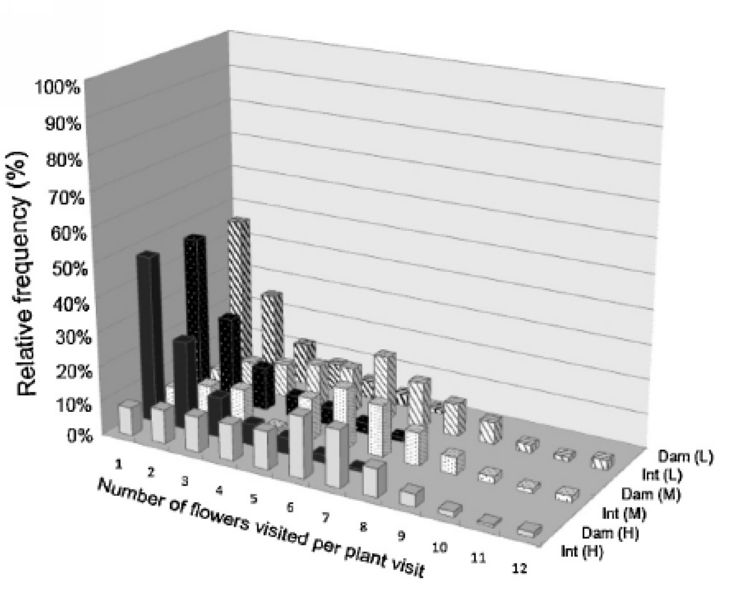Floral Herbivores and Pollinators Contributed to Plant Female Reproductive Success
2013-11-05
Most flowering plants that depend on mutualistic pollinators for fertilization are also attacked simultaneously by antagonistic visitors such as florivores, folivores, and seed predators. Floral herbivores that feed on male and female gametes (pollen and ovules) directly reduce fertilization success. In addition, damage to sterile floral tissue such as petals and calyxes, which often have an attractive function, may also indirectly decrease reproductive output due to a decline in pollination services. These direct and indirect effects of floral herbivory on plant reproductive fitness may be important in the adaptive evolution of floral traits and breeding systems of flowering plants.
Under the supervision of Prof. WANG Qingfeng, Dr. LIAO Kuo from Wuhan Botanical Garden conducted a series of field experiments to determine the relative contribution of floral herbivores and pollinators to female reproductive sucess in an alpine herb, Pedicularis gruina, in two natural populations over two consecutive years.
Experimental manipulations included bagging, hand supplemental, geitonogamous pollination, and simulated floral herbivory. Bumblebees not only avoided damaged flowers and plants but also decreased successive visits of flowers in damaged plants, and the latter may reduce the level of geitonogamy. Although seed set per fruit within damaged plants was higher than that in intact plants, total seed number in damaged plants was less than that in intact plants, since floral herbivory-mediated pollinator limitation led to a sharp reduction of fruit set.
Overall, the results suggested that resource reallocation within inflorescences of damaged plants may partially compensate for a reduction in seed production. Additionally, a novel finding was the decrease in successive within-plant bumblebee visits following floral herbivory. This may increase seed quantity and quality of P. gruina since self-compatible species exhibited inbreeding depression.
The patterns of compensation of herbivory and its consequences reported in this study give an insight into the combined effects of interactions between floral herbivory and pollination on plant reproductive fitness.
This work was financed by the National Natural Science Foundation of China and the Strategic pilot science and technology of CAS grants. Relevant results were published in Flora online entitled “Effects of floral herbivory on foraging behaviour of bumblebees and female reproductive success inPedicularis gruina(Orobanchaceae)”.

Pedicularis gruina, floral herbivory and pollinators (A) flowers (B) floral herbivory consuming flowers (C) flowers pollinated by Bombus atrocictus (D) flowers pollinated by B. richardsi. (Image by Dr. LIAO Kuo)

Distribution of successive flower visits within damaged (Dam) and intact (Int) plants of P. gruina in high (H), middle (M) and low (L) density plots. (Image by Dr. LIAO Kuo)